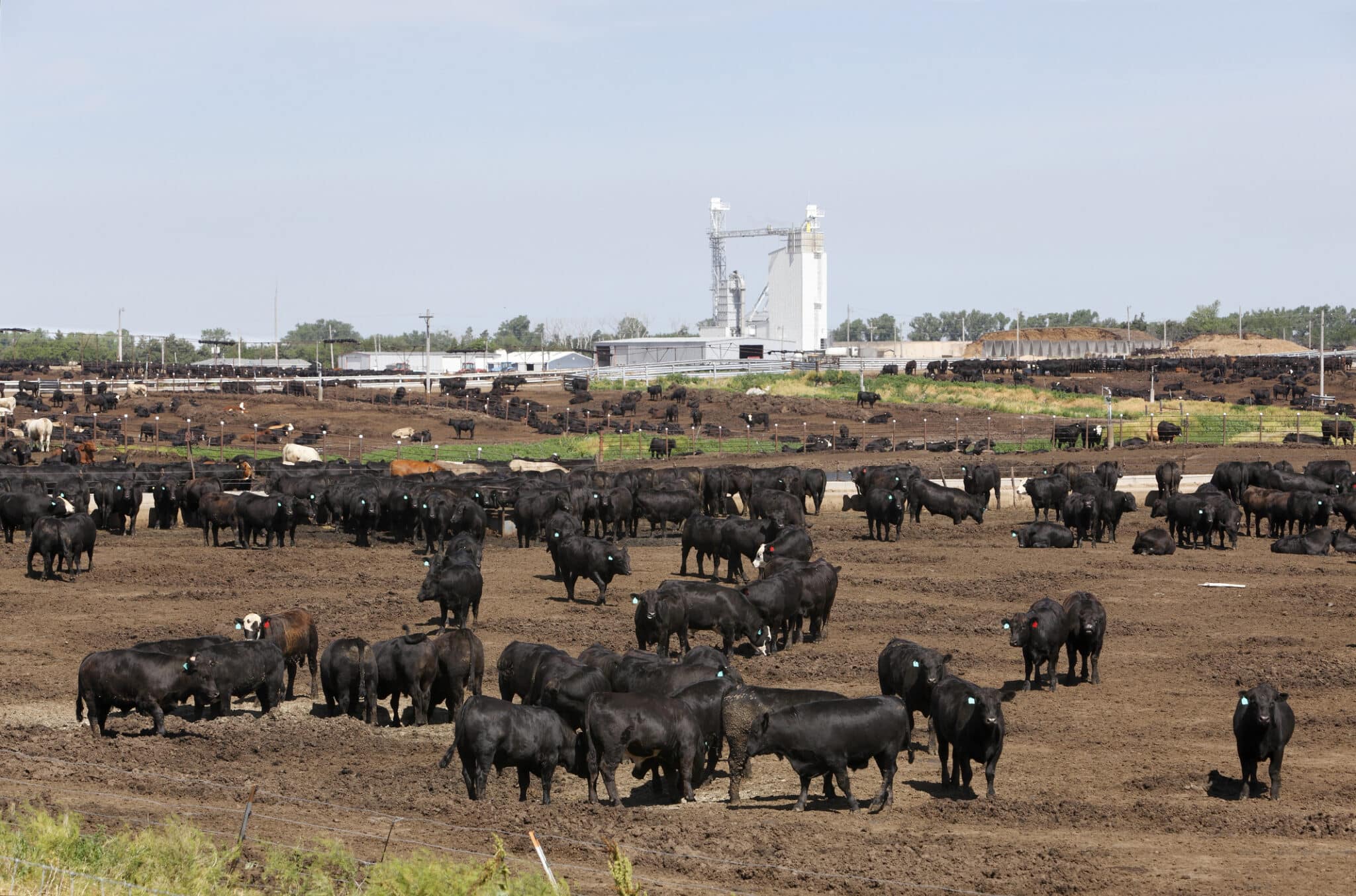Products You May Like
Cattle in a Kansas feedlot. BeyondImages / E+ / Getty Images
The heat wave that broke records across the South and Central U.S. this week had a devastating impact on cattle in Kansas.
The combination of high heat, high humidity and low wind proved too much for thousands of the animals to handle, AP News reported.
“The Kansas Department of Health and Environment is aware of at least 2,000 cattle deaths that occurred in the southwest part of Kansas,” department communications director Matt Lara told NPR Thursday.
A video widely shared on social media shows the dead bodies of cattle lying on the side of a field.
The problem, officials said, was that the animals were not prepared for the triple threat of heat, humidity and low wind, CNN reported. Temperatures rose 10 to 14 degrees over the weekend in southwestern Kansas, Scarlett Hagins of the Kansas Livestock Association told CNN. For example, temperatures in Haskell County, Kansas, reached a high of 79.9 degrees Fahrenheit June 9 and then climbed to 101.1 degrees Fahrenheit on June 11, according to NPR. They stayed in the triple digits for three days, reaching as high as 104 degrees.
At the same time, humidity increased rapidly between Friday and Saturday and nighttime lows only reached around 70 degrees Fahrenheit, CNN reported.
“Yes, temperatures rose, but the more important reason why it was injurious was that we had a huge spike in humidity … and at the same time wind speeds actually dropped substantially, which is rare for western Kansas,” Kansas State University cattle veterinarian A.J. Tarpoff told AP News.
Another factor was the timing of the heat wave, which occurred relatively early in the year. This meant that many of the cattle still had their winter coats.
“This is a one in 10-year, 20-year type event. This is not a normal event,” Brandon Depenbusch, who operates the Innovative Livestock Services feedlot in Great Bend, Kansas, told AP News. “It is extremely abnormal, but it does happen.”
It isn’t exactly clear how many cattle were impacted by the Kansas heat wave because the official figures are based on the farms that asked for state assistance in disposing of the dead bodies, meaning the actual death toll could be higher, NPR pointed out. For the impacted farmers, the deaths represent a major economic loss.
“It’s a significant impact. Of course, these cattle would be around, have a value of around $2,000 per head, as their market-ready animals,” Hagins told KAKE. “Any kind of animal loss is significant to a producer, to cattle feeder, to a rancher. No one wants to see any kind of loss like this.”
She added that federal disaster programs exist that could help the farmers. However, the risk of similar incidents may increase in the future.
The climate crisis is making heat waves more frequent and more intense. In the last 10 years, the continental U.S. has recorded record highs twice as often as record lows.
“What is clear is that the livestock (and human, for that matter) heat stress issue will become increasingly challenging for livestock farmers to deal with, as the world warms,” climate researcher Philip Thornton told The Guardian.
Thornton wrote a paper on the impacts of global warming on livestock with agriculture economist and professor emeritus at the University of Illinois Urbana-Champaign Gerald C. Nelson. Nelson told The Guardian that farmers could help their animals cope by increasing ventilation and cooling systems indoors and, in some instances, supplementing their feed outdoors. However, the best long term solution is reducing greenhouse gas emissions.
Factoring farming, including of beef, is also a major contributor to the climate crisis in its own right.
Sign up for our newsletter
By signing up, you agree to the Terms of Use and Privacy Policy & to receive electronic communications from EcoWatch Media Group, which may include marketing promotions, advertisements and sponsored content. daniel test
